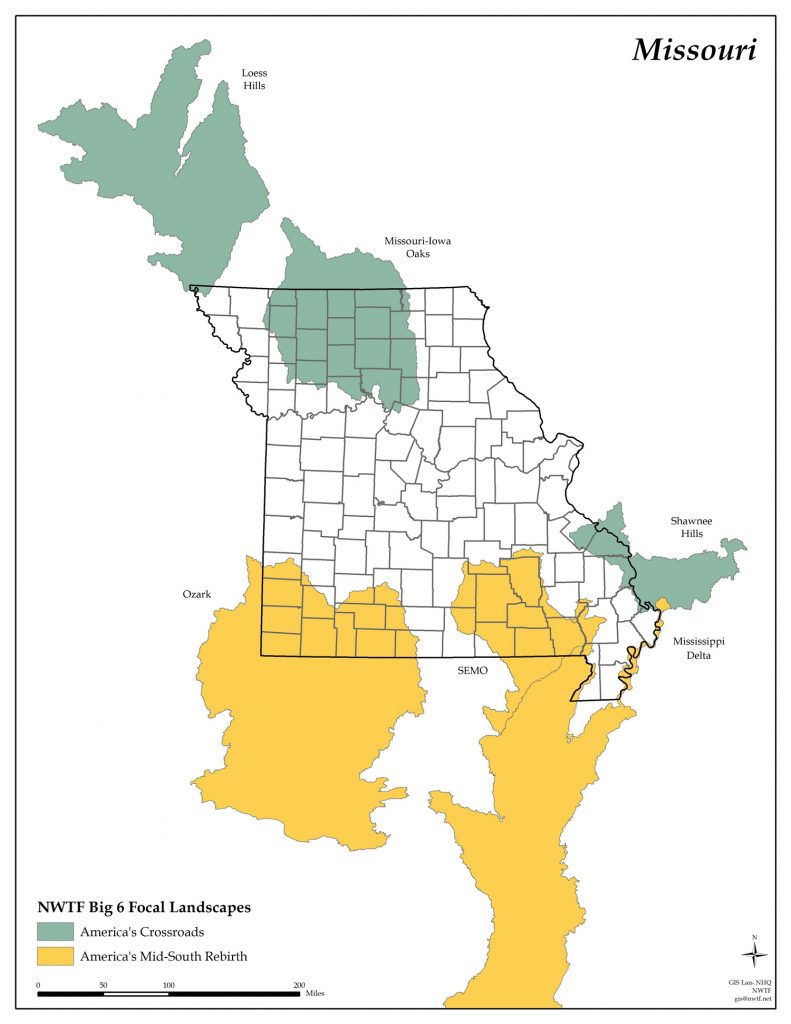Achieving Region-Specific Goals Requires a Federation
There is not a one-size-fits-all approach to sustaining the wild turkey population in North America; rather, it takes a federation.
The challenges wild turkeys face are often region-specific. Predation, climate change, urban development, degraded habitat, lack of proper forest management – these issues impact wild turkey populations throughout the country, but the degree to which they do will likely vary from region to region, and so too will the solution. For instance, wild turkeys in Massachusetts are faced with much different challenges, than, say, wild turkeys in Arkansas. In the former, there is an overabundance that could lead to eventual complications if the carrying capacity is exceeded (this is where hunting as a management tool is crucial). In the latter, turkey numbers are not where experts or turkey hunters want them to be. This dichotomy of challenges illustrates that there is not a one-size-fits-all approach to sustaining the wild turkey population in North America; rather, it takes a federation.
Operating as a federation, the NWTF employs biologists, foresters and fundraising staff, and invests in research and habitat enhancement projects at a regional level, tackling the most pressing issues a particular state or region may face.
This unique model of conservation delivery wouldn’t be possible without dedicated NWTF volunteers in each state raising key funds through banquets, working with their respective wildlife resource agencies, forging new partnerships and inviting in new members.
Another example of organizational synergy is in Missouri, where current wild turkey populations are less than favorable. By operating as a federation, the NWTF and its partners are studying potential causes and combatting the decline through region-specific goals.
In 2012, the Missouri NWTF state board adopted Missouri-specific goals outlined in the state’s Save the Habitat. Save the Hunt. Strategic Plan that guide Super Fund allocation. Establishing these focused goals ensured that the money raised at NWTF banquets was spent on the most high-yielding projects across the state, addressing both conservation and hunting heritage needs.

Primary conservation goals in the Missouri Strategic Plan were to increase the use of prescribed fire, increase forest management activities and increase the establishment of native warm-season grasses, all geared toward enhancing habitat and thus more prolific and robust wild turkey populations.
“These practices are all pivotal in providing key nesting and brood-rearing habitats for ground nesting birds, which the lack of is widely accepted as the most significant limiting factor for successful reproduction,” said John Burk, NWTF district biologist in Missouri. “Since it is not practical to use an opportunistic shotgun approach when implementing conservation-related projects, especially when precious dollars are limited, the best strategy is to use a focused approach. Identifying key landscapes and combining efforts and dollars with other interested partners gains the biggest bang for the buck.”
The NWTF worked with the Missouri Department of Conservation to target areas most in need of management, ultimately determined to be parts of northeastern Missouri and southern Iowa. The project aimed to restore open woodland and savanna conditions on private lands within the focus area. Burk said these two habitat types, which benefit a wide array of wildlife, were once dominant in the region but have severely declined.
“Our efforts in successfully restoring these habitats is one of the most important things we can do to address the turkey decline in north Missouri and throughout the Midwest for that matter,” Burk said.
In addition to the NWTF and the Missouri Department of Conservation, contributing partners include the U.S. Fish and Wildlife Service, the Audubon Society of Missouri and Bass Pro Shops and Cabela’s Outdoor Fund. The cumulative $310,000 was used to augment the existing Missouri Department of Conservation’s cost-share program to pay for timber stand improvement, prescribed burning, native warm-season grass establishment and woody cover control.
“Woody cover control is the mechanical removal of smaller diameter woody vegetation to enhance the process of savanna and open woodland restoration in areas where burning alone would take longer and be less effective,” Burk said. “The MDC Private Lands Conservationists and Foresters work with interested landowners to develop management plans, line up contractors and approve completed projects.”
To date, these region-specific goals have impacted 104 landowners and achieved 1,249 acres of prescribed burning, 1,766 acres of timber stand improvement, 136 acres of woody cover control and 95 acres of native warm-season grass establishment on private land, creating 67 open woodland units and totaling 3,246 acres conserved.
“Although it is impossible to accurately measure the actual influence of these units in additional birds produced, it is probably safe to assume that their impact goes far beyond the actual acres improved,” Burk said.
